
You'll find dry mustard powder in your grocery store’s spice aisle. This powdered substance is created using ground mustard seeds and it packs a powerful punch -- as long as it’s fresh. While you can use dry mustard to make mustard, it has a number of other uses.
Spice Rubs
Dry mustard works in a variety of spice rubs. Because its essentially yellow mustard, you can use it to flavor meat and seafood items that take to the condiment well. Salmon, for example, can be crusted using dry mustard powder, salt, brown sugar and dill. Beef spice rubs, such as those containing paprika, rosemary, thyme, salt and pepper and dry mustard are also ideas. Dry mustard can also be used on chicken and pork.
Vinaigrettes
Just like yellow mustard, dry mustard powder can be used to make vinaigrettes and salad dressings. A vinaigrette is a lighter salad dressing made from a mixture of vinegar or wine, oil and seasonings. Combine dry mustard powder with red wine, lemon juice, bacon fat, garlic, Worcestershire sauce and liquor for a distinctive, rich dressing. For a mustard vinaigrette, use dry mustard powder, garlic, balsamic vinegar, olive oil, parsley, thyme and pepper. Dry mustard-based vinaigrettes work best with mixed green salads.
Sauces and Soups
Dry mustard can be sprinkled into sauces to add a distinct tangy flavor. Add dry mustard powder to a cheese sauce, such as a sauce for macaroni and cheese. Because dry mustard is acidic, it can help cut through the creamy, fatty taste of a rich cheese sauce. Adding dry mustard powder to a sauce for potatoes au gratin can also help cut through the rich, fatty taste. Pan sauces, such as those made from chicken drippings, can also benefit from a sprinkle of dry mustard powder. Add additional depth to a cream soup, such as broccoli or potato, by adding in a teaspoon or more of dry mustard powder.
Mustard
Dry mustard powder can be reconstituted and turned into yellow mustard. If you don’t have yellow mustard on hand, this is a suitable replacement. Also, by making your own mustard, you’re in control of the flavor. You can add garlic for additional flavor, pickle juice or turmeric for a new twist on a classic condiment. While some recipes call for mustard seed in addition to mustard powder, you can still make a homemade mustard without the seeds -- the seeds add a more powerful flavor, but this can be done by increasing the amount of mustard powder you use.
Related Articles

A Substitute for a Packaged, Dry, ...

How to Make Fish Taco Sauce
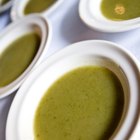
The Best Spices for Soups

What Are the Health Benefits of Pico De ...

Does Simmering Ground Beef Make It More ...
Homemade Onion Soup Mix Recipe

How to make Stuffed Jalapeno Peppers ...

How to Make Moist Baked Chicken Breasts ...

Calories in Pimento Cheese
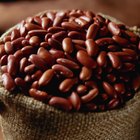
Calorie Count of Beans
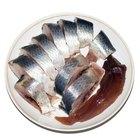
Herring in Wine Sauce

Uses for Major Grey's Chutney
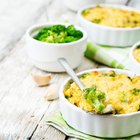
Low Sodium Substitute for Condensed ...

How to Cook Liver and Onions

Can You Substitute Beef Bouillon for ...

How to Marinate Salmon in Red Wine
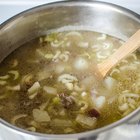
How to Make Potato Hamburger Soup

How to Tone Down Spiciness in BBQ Sauce

Can You Make Sweet and Sour Without ...
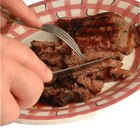
How to Cook Dry Aged Steak
References
- On Cooking: A Textbook of Culinary Fundamentals; Sarah R. Labensky
- Chemistry of Spices; V.A. Parthasarathy, et al.
Writer Bio
Shailynn Krow began writing professionally in 2002. She has contributed articles on food, weddings, travel, human resources/management and parenting to numerous online and offline publications. Krow holds a Bachelor of Science in psychology from the University of California, Los Angeles and an Associate of Science in pastry arts from the International Culinary Institute of America.
Photo Credits
ITStock Free/Polka Dot/Getty Images